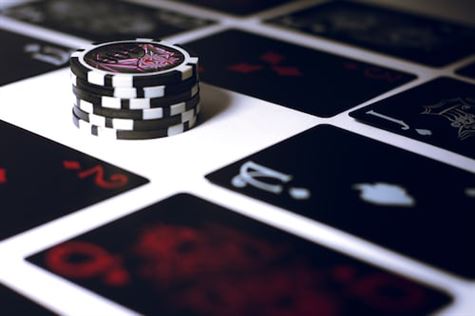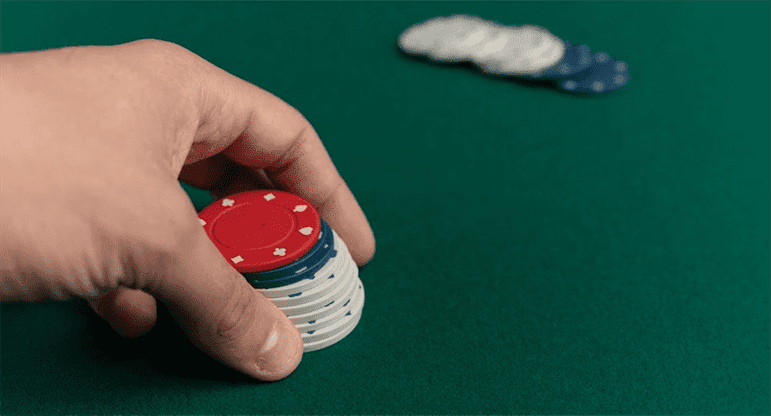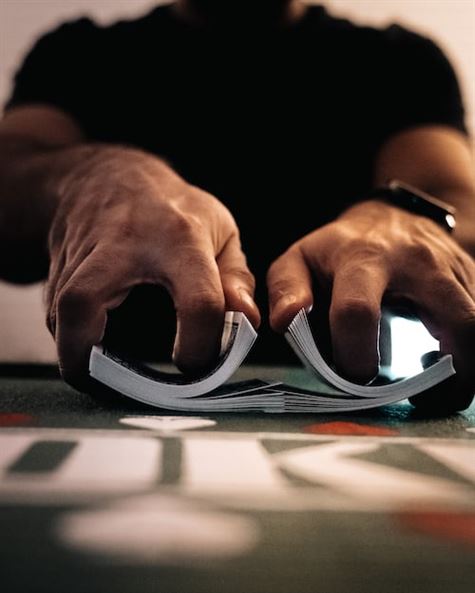Bluffing is a strategic element commonly employed in various aspects of life, from poker games to negotiations. It involves intentionally deceiving others by presenting a false image or information. While bluffing may seem like a purely psychological tactic, it also has a mathematical foundation. The mathematics of bluffing revolves around the delicate balance between risk and reward. By understanding the probabilities and expected values involved, individuals can make informed decisions when deciding whether to bluff or not. In this article, we will explore the mathematical principles underlying bluffing and how they can be applied in different scenarios.
The Mathematics Behind Successful Poker Bluffing Strategies
To understand the mathematics behind successful bluffing strategies, it is important to consider the concept of expected value. Expected value is a mathematical term that represents the average outcome of a situation over the long run. In poker, it is calculated by multiplying the probability of each possible outcome by the value of that outcome and summing them up.
When bluffing, players must weigh the potential reward of winning the pot against the risk of being caught. If the expected value of a bluff is positive, it means that the potential reward outweighs the risk, making it a favorable play. Conversely, if the expected value is negative, it is best to avoid bluffing in that particular situation.
Calculating the expected value of a bluff requires an understanding of the probability of different outcomes. This can be determined by considering the number of cards remaining in the deck, the cards that have already been revealed, and the knowledge of the opponent’s playing style. By analyzing these factors, players can estimate the likelihood of their bluff being successful.
Another important mathematical concept in bluffing is pot odds. Pot odds refer to the ratio of the current size of the pot to the cost of a contemplated call. By comparing the pot odds to the probability of winning the hand, players can determine whether it is profitable to make a bluff. If the pot odds are higher than the probability of winning, it may be worth taking the risk.
In addition to expected value and pot odds, players must also consider the concept of equity. Equity is a measure of a player’s share of the pot based on their chances of winning the hand. When bluffing, players must assess their equity and determine whether it is worth risking their chips to try and increase their share of the pot.
Successful bluffing also requires an understanding of game theory. Game theory is a mathematical framework that analyzes strategic interactions between players. By applying game theory principles, players can anticipate their opponents’ actions and adjust their own strategies accordingly. This can help them make more informed decisions when bluffing and increase their chances of success.
Calculating Risk and Reward: A Mathematical Approach to Poker Bluffing
At its core, bluffing is about calculating risk and reward. It involves weighing the potential loss of your bet against the potential gain of winning the pot. To do this effectively, you must understand the concept of expected value (EV). EV is a mathematical formula that calculates the average outcome of a situation over the long run.
When bluffing, you must consider the probability of your opponents folding and the size of the pot. Let’s say you have a weak hand, but you believe that your opponents have even weaker hands. If you bet a certain amount, what is the likelihood that they will fold? And if they do fold, how much will you win? These are the questions you need to answer to determine the EV of your bluff.
To calculate the EV, you multiply the probability of each outcome by its respective value and sum them up. For example, if there is a 50% chance that your opponents will fold and you will win a $100 pot, and a 50% chance that they will call and you will lose $50, the EV of your bluff would be (0.5 * $100) + (0.5 * -$50) = $25.
By using this mathematical approach, you can make informed decisions about when to bluff and how much to bet. If the EV of your bluff is positive, it means that, on average, you will make money in the long run. However, if the EV is negative, it means that you will lose money over time.
Another important factor to consider when bluffing is your table image. Your table image is the perception that your opponents have of your playing style. If you have been playing tight and only betting with strong hands, your opponents are more likely to believe that you have a strong hand when you bluff. This can increase the probability of them folding and improve the EV of your bluff.
On the other hand, if you have been bluffing frequently and playing loose, your opponents may be more inclined to call your bluff. In this case, the EV of your bluff would be lower, and it may not be a profitable move.
To maximize the effectiveness of your bluffs, you must also consider the size of your bets. Betting too little may not convince your opponents to fold, while betting too much may scare them away. Finding the right balance is crucial. By analyzing the pot odds and the likelihood of your opponents folding, you can determine the optimal bet size that maximizes your EV.
Understanding Probability in Poker Bluffing: A Mathematical Perspective
To understand the mathematics of bluffing, let’s consider a simplified example. Imagine a game of Texas Hold’em, where you hold two cards of the same suit, and the flop reveals three more cards of the same suit. This gives you a flush draw, meaning you have the potential to complete a flush if two more cards of the same suit are dealt.
To determine the probability of completing your flush, you need to consider the number of unknown cards in the deck and the number of cards that will complete your hand. In this case, there are 47 unknown cards (52 cards in a deck minus your two hole cards and the three flop cards), and nine cards of the same suit that will complete your flush (13 cards of each suit minus the four already on the table).
Using basic probability principles, you can calculate that the odds of completing your flush on the next card (the turn) are approximately 19%. If you don’t complete your flush on the turn, the odds of completing it on the river (the final card) increase to around 35%.
Now, let’s consider the risk-reward aspect of bluffing in this scenario. If you decide to bluff and bet aggressively, your opponents will have to decide whether to call your bet or fold. If they fold, you win the pot without having to show your cards. However, if they call, you will have to reveal your hand, and if it’s not a winning hand, you will lose the pot.
To determine the potential reward of bluffing, you need to consider the size of the pot and the likelihood of your opponents folding. If the pot is large and your opponents are more likely to fold, the potential reward of bluffing increases. Conversely, if the pot is small and your opponents are less likely to fold, the potential reward decreases.
By combining the probability of completing your flush with the potential reward of bluffing, you can make a more informed decision. If the odds of completing your flush are high and the potential reward of bluffing is also high, it may be a favorable situation to bluff. However, if the odds are low and the potential reward is minimal, bluffing may not be a wise choice.
The Role of Game Theory in Poker Bluffing: Balancing Risk and Reward
Game theory is a branch of mathematics that deals with the study of strategic decision-making. It provides a framework for analyzing and understanding the interactions between players in a game. In the context of poker, game theory can be used to analyze the optimal strategies for bluffing and to determine the balance between risk and reward.
When a player decides to bluff, they are essentially taking a calculated risk. They are betting that their opponents will fold, giving them the pot without having to show their cards. However, if their bluff is called, they risk losing the pot and potentially damaging their reputation at the table. The key to successful bluffing lies in finding the right balance between risk and reward.
To understand this balance, let’s consider a simplified example. Imagine a game of poker with two players, Alice and Bob. Alice has a weak hand, while Bob has a strong hand. Alice decides to bluff and makes a large bet. Bob, suspecting that Alice is bluffing, must decide whether to call or fold.
From Alice’s perspective, she wants to make a bet that is large enough to convince Bob that she has a strong hand, but not so large that it becomes too risky. If Alice bets too little, Bob may call her bluff and win the pot. On the other hand, if Alice bets too much, she risks losing a large amount of money if Bob calls.
From Bob’s perspective, he wants to make a decision that maximizes his expected value. If he calls Alice’s bluff and wins, he will win the pot. If he calls and loses, he will lose the amount of his bet. If he folds, he will lose nothing but will also miss out on the opportunity to potentially win the pot.
To analyze this situation, game theory provides a concept called the Nash equilibrium. The Nash equilibrium is a solution concept that predicts the outcome of a game when each player is playing their optimal strategy, given the strategies of the other players. In the context of poker bluffing, the Nash equilibrium represents the optimal balance between risk and reward.
In our example, the Nash equilibrium occurs when Alice bluffs with a certain frequency and Bob calls with a certain frequency. If Alice bluffs too often, Bob will catch on and start calling more frequently, reducing Alice’s expected value. If Alice bluffs too rarely, Bob will fold more often, reducing Alice’s potential winnings.
Finding the Nash equilibrium requires a deep understanding of the mathematics behind poker bluffing. It involves calculating the probabilities of different outcomes and determining the optimal strategies for each player. This is where game theory comes into play, providing a mathematical framework for analyzing and understanding the optimal strategies for bluffing.
Mathematical Analysis of Bluffing in Poker: Maximizing Profits and Minimizing Losses
At its core, bluffing is a game of probabilities. It requires players to calculate the likelihood of their opponents having a better hand and weigh it against the potential reward of winning the pot. This calculation involves a careful balance between risk and reward.
To begin with, players must assess the strength of their own hand. This can be done by assigning a numerical value to each possible hand and determining the probability of obtaining each one. By comparing the strength of their hand to the strength of the community cards, players can estimate the likelihood of having the best hand at any given moment.
Once players have evaluated their own hand, they must then consider the range of possible hands their opponents may have. This requires a deep understanding of poker probabilities and the ability to read opponents’ betting patterns. By analyzing the community cards, the size of the pot, and the actions of their opponents, players can make educated guesses about the strength of their opponents’ hands.
With this information in hand, players can then decide whether or not to bluff. The decision to bluff is based on a combination of the probability of success and the potential reward. If the probability of success is high and the potential reward is significant, bluffing may be a viable option. However, if the probability of success is low and the potential reward is minimal, bluffing would be a risky move.
To further complicate matters, players must also consider the concept of pot odds. Pot odds refer to the ratio of the current size of the pot to the cost of a contemplated call. By comparing the pot odds to the probability of success, players can determine whether or not a bluff is mathematically justified. If the potential reward outweighs the cost of the call, bluffing becomes a more attractive option.
In addition to pot odds, players must also consider the concept of expected value. Expected value is a mathematical calculation that takes into account the probability of each possible outcome and the associated payoff. By calculating the expected value of a bluff, players can determine whether or not it is a profitable move in the long run.
Bluffing in poker is a delicate balance between risk and reward. It requires players to carefully analyze the strength of their own hand, the range of possible hands their opponents may have, and the potential reward of winning the pot. By understanding the mathematical analysis of bluffing, players can make more informed decisions and increase their chances of success at the poker table. So, the next time you find yourself contemplating a bluff, remember to consider the mathematics behind it and make your move accordingly.




